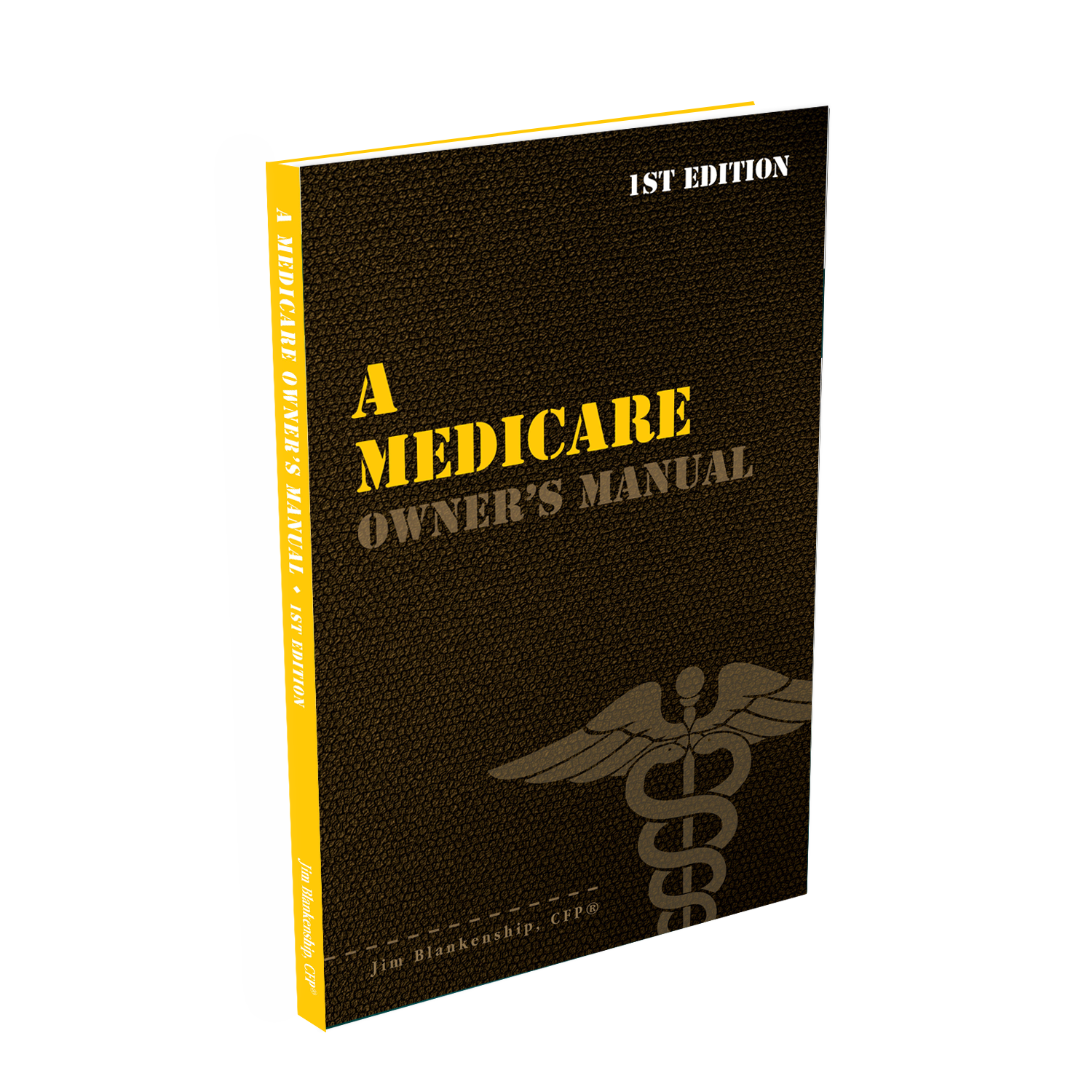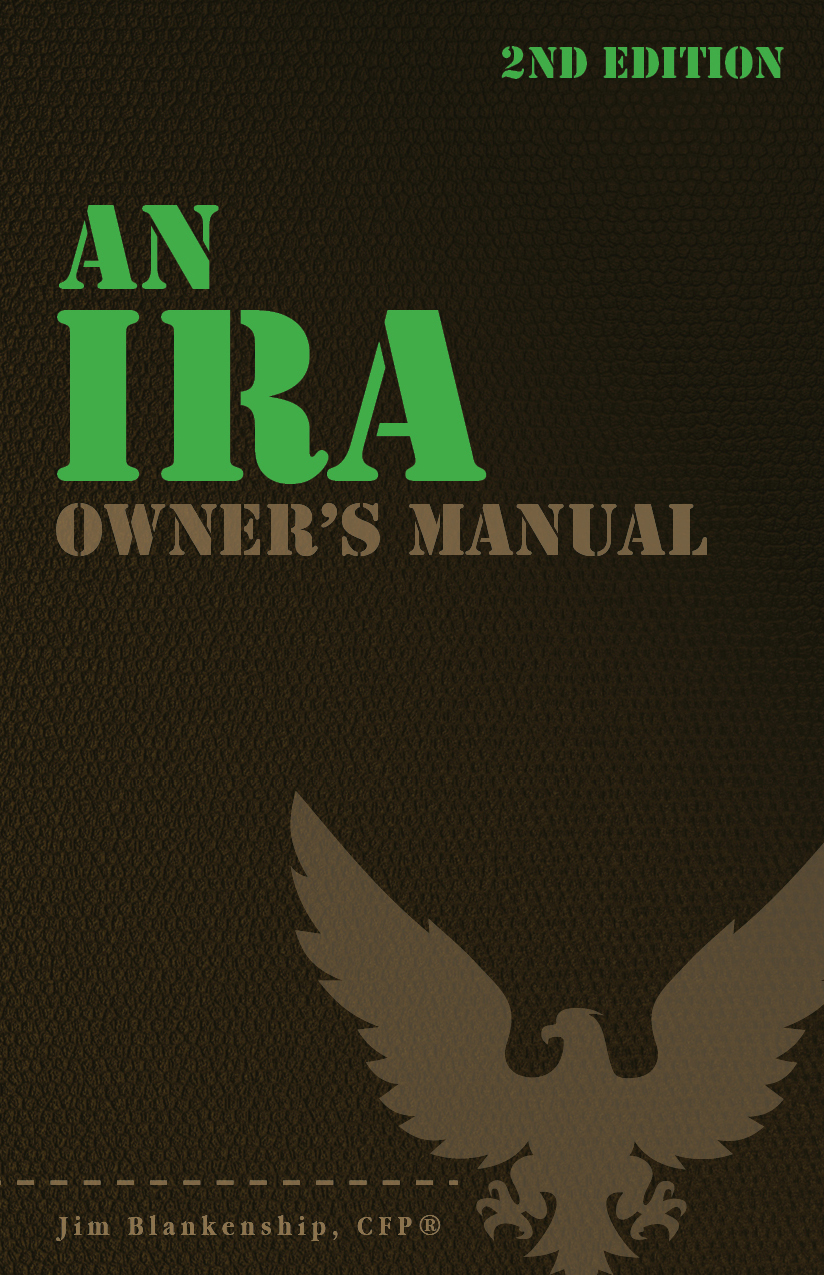Note: This is a dust-off of an article written in April 2010 that dealt with the special two-year taxation of Roth Conversions that was available in that year. An astute reader noted that the original was a bit dusty and not applicable to today’s decision-making (thanks S!). One of the provisions of the Affordable Care Act is a new tax – a surtax on investment income over certain amounts. This surtax has come into play this year, for tax returns filed in 2014 on 2013 income. The income amounts are, admittedly, rather high, but nonetheless will likely impact a lot of folks. What you may not realize is that, due to the application of this surtax, Roth IRA conversion strategies that you may have had in play may be impacted. Depending upon your overall income, you may have to pay the surtax on some or all of your conversion amount. […]
qrp
What You Can Do If Your 401(k) Has High Fees
Now that we’ve all been receiving 401(k) plan statements that include information about the fees associated with our accounts, what should you do with that information? Some 401(k) plans have fees that are upwards of 2% annually, and these fees can introduce a tremendous drag on your investment returns over a long period of time. There are two components to the overall cost of your 401(k) plan. The first, and the easiest to find, is the internal expense ratios of the investments in the plan. Recent information shows that, on average, these investment fees are something on the order of 1% to 1.4% or more. The second part of the costs is the part that has recently begun to be disclosed: the plan-level fees. These are the fees that the plan administrator has negotiated with the brokerage or third-party administrator to manage the plan. These fees can average from 1% […]
Did the Advent of 401(k) Plans Hurt Americans?
There’s been quite a bit of press lately about the recent Economic Policy Institute study (see this article “Rise of 401(k)s Hurt More Americans Than It Helped” for more), which indicates that the 401(k) plan itself is the cause of American’s lack of retirement resources. I think it has more to do with the fact that the 401(k) plan (and other defined contribution plans) were expected to be a replacement for the old-style defined benefit pension plans, and the fact that those administering the retirement plans did little to ensure success for the employees. Traditional defined benefit pension plans didn’t ask the employee to make a decision about how much to set aside – this was determined by actuaries. Then the company made sure that the money was set aside (in most cases) so that the promised benefit would be there when the employee retires. In the world of 401(k) […]
5 Essential Financial Planning Steps for Your 30s and 40s
(jb note: the article below is from my friend Roger Wohlner, who blogs at The Chicago Financial Planner.) Many of the calls that I receive are from folks in their 50s or 60s who are either within sight of retirement or already retired. Many of these callers are pretty well-prepared for retirement and are seeking my help to fine-tune their situation and/or to help them through this next phase of life. This type of financial readiness doesn’t just happen it takes planning and preparation. Here are 5 essential financial planning steps for those of you in your 30s and 40s to help you reach your retirement goals and more importantly to help you achieve financial independence. Get started If for whatever reason you haven’t done much of anything to ensure your financial future it’s time to get going. Today is the best day to get started, tomorrow is the second best […]
Don’t Just Walk by That Dime on the Ground!
Have you ever been walking along the street and saw a dime on the ground? Did you just walk right by, or did you stop to pick it up? Heck, it’s only a dime, it’s not hardly worth the effort to bend over, right? But what if it was a dollar? Or a hundred dollars? You wouldn’t just walk by that, would you? What about $1,200? Unfortunately, many folks do this very thing with their 401(k) plan employer matching funds. Most employers that sponsor 401(k) plans provide a matching contribution when you defer money into the plan. Often this is expressed as a certain percentage of your own contribution, such as 50% of your first 6% of contributions to the plan. So if you make $40,000 a year and you contribute 6% to the 401(k) plan, that means you’ll be contributing $2,400 to the plan from your own funds, pre-tax. […]
Exceptions to the 10% Early Withdrawal Penalty from IRAs and 401(k)s
When you take money out of your IRA or 401(k) plan (or other qualified retirement plan, such as a 403(b) plan), if you’re under age 59½ in most cases your withdrawal will be subject to a penalty of 10%, in addition to any taxes owed on the distribution. There are many exceptions to this rule though, and the exceptions are not the same for all types of plans. IRAs have one set of rules, and 401(k)s have another set of rules. The exceptions are always related to the purpose for which the money was withdrawn. The exact same dollars withdrawn do not have to be used for the excepted purpose, just that the excepted expense was incurred. IRA Exceptions It is important to know that all distributions from your traditional IRA are subject to ordinary income tax, but some distributions are not subject to the early withdrawal penalty. The list […]
Avoid Awkwardness in the Afterlife–Confirm Your Beneficiary Designations
This is a topic that I cover with all clients, and one that I recommend you for everyone with retirement plans and other accounts with beneficiary designations. Too often we think we have the beneficiary designation form filled out just the way we want it, and then (once it’s too late) it is discovered that the form hadn’t been updated recently – and the designation is not what we hoped for. I made this recommendation to a client not long ago. He assured me that he had all of his designations set up just the way he wanted. His wife, sitting next to him in our meeting, asked him to make sure – talk to the IRA custodian and get a copy of the designation as it stands today. A bit miffed about it all, he agreed to do so, and did the next day. Guess what he found – […]
A Few Facts to Know About Retirement Plan Contributions
As we near the tax filing deadline, there are a few things you need to be aware of as you consider your retirement plan contributions for tax year 2012 (or whatever the prior tax year is, if you’re reading this sometime later). Regular IRA contributions are due by the filing deadline, with no extensions. That means April 15, 2013 for the 2012 tax year. Your contribution for 2012 is considered made “on time” if your payment is postmarked by midnight on April 15, 2013. Perhaps you wish to make a more substantial contribution to a retirement plan – in 2012, you can contribute up to $50,000 to a Keogh plan. That amount is limited to 20% of the net self-employment income, or 25% of wage income if the individual is an employee of the business. Keogh plan contributions can be made by the extended due date of your return – […]
Don’t Forget to Pay Tax on Your 2010 Roth Conversion
Remember back in those heady days in 2010, when you finally had carte blanche eligibility to convert your IRA funds to a Roth IRA regardless of your income? And then there was a special provision that the IRS made available: you could convert money to your Roth IRA in 2010, and delay recognizing the income and paying the tax over the next two years… remember that? That was so cool. However. (Ever notice how there’s always a “however” in life?) Here we are, two years later, and NOW you have to pay tax on the Roth conversion that happened way back then. You might have forgotten it altogether, but you can bet the IRS hasn’t forgotten. Hopefully you didn’t forget this on your 2011 tax return that you filed in 2012 as well. At that time, you should have recognized half of the deferred Roth IRA conversion from 2010 on […]
Rolling Over a 401(k) into a New Employer’s Plan
When you change jobs you have a choice to make regarding your retirement plan at former employer. If the plan is a 401(k), 403(b), or other qualified plan of that nature, you may have the option to roll the old plan into a plan at your new employer. The new employer’s plan must allow rollovers into the plan – this isn’t always automatic. Most plans will allow rollover of former employer’s plans, but not all. Once you’ve determined that the plan will accept a rollover, you should review the new plan to understand whether or not it makes sense to roll your old plan into it, or choose another option. Other options may be: rollover the old plan into an IRA, convert the old plan to a Roth IRA, leave the old plan where it is, or take a distribution from the old plan in cash. In this article we’ll […]
IRAs and Medicaid
When it comes to IRAs and Medicaid eligibility the question that gets asked is, “How does my IRA affect my eligibility for Medicaid?” Many states share similar guidelines when it comes to exempt and non-exempt assets in IRAs. Essentially, it boils down to this: if the IRA is not in payout status (the IRA owner is not taking required minimum distributions) then the assets in the IRA are included (non-exempt) in the determination of eligibility. However, if the IRA is in payout status and the owner is now taking required minimum distributions (RMDs) the total amount of the IRA is not included, but the annual income from the RMDs is.The same would be true regarding 401(k)s, 403(b), and other qualified plans that may require RMDs after age 70 ½. There are some states (Illinois for example) that treat IRAs, a 401(k), and pensions as exempt. Check your state’s laws to […]
Defined Contribution vs. Defined Benefit Plans
Many employers have made retirement plans available for their employees, and sometimes there are multiple types of plans that the employee can participate in. These retirement plans fall into two categories: Defined Contribution and Defined Benefit plans. In this article we’ll cover the differences between the two types of plans. Defined Benefit (DB) Plans The older type of retirement plan is the Defined Benefit Plan. (We’ll refer to this as DB for the rest of the article.) DB plans are generally the old standard pension-type of plan, and this category of plan is named as it is because the benefit is a defined amount in a pension plan. By a defined amount, we mean that a formula is used to calculate the amount of pension that you’ll receive. The formula typically uses factors such as your years of employment, your average salary (either over your entire career, or perhaps over […]
What is a 401(k)?
Many of us have access to a 401(k) plan at our workplace – have you ever wondered exactly what a 401(k) is? The 401(k) plan is named for a specific section in the Internal Revenue Code – Section 401, subsection k, to be exact. This code section lays out the rules for these retirement plans, which are employer-sponsored plans providing a method for the worker or employee to defer a certain amount of income into a savings plan on a pre-tax basis. Often the employer also includes a matching contribution to the employee’s account. These matches are typically based upon the amount of contribution that the employee makes to the plan – such as a dollar-for-dollar match for contributions made by the employee up to certain percentage of the employee’s income. The deferred income is not subject to ordinary income tax, but it is still subject to FICA (Social Security) […]
History of the 401(k)
Back in 1978, the year of 3 popes, Congress passed the Revenue Act of 1978 which included a provision that became Internal Revenue Code section 401(k). The 401(k) has roots going back several decades earlier, with many different rulings (Hicks v. US, Revenue Ruling 56-497, and Revenue Ruling 63-180, among others), providing the groundwork for the specialized tax treatment of salary deferrals that Section 401(k) enabled. More groundwork for the 401(k) as we know it was laid with the passage of the Employee Retirement Income Security Act (ERISA) of 1974, in that the Treasury Department was restricted from putting forth a particular set of regulations that would have reduced or eliminated the tax-deferral benefits of deferred compensation plans. After the Treasury Department withdrew the proposed regulations in 1978, the way was cleared to introduce the 401(k) plan with the Revenue Act. This particular section of the Code enabled profit-sharing plans […]
Receive a Tax Credit For Saving
Starting (or staying with) a savings plan can be difficult to do. After all, it’s often difficult enough to just get by on your earnings day-to-day, week-to-week, before reducing the take-home pay that you’ve worked so hard for by putting it into a savings plan. The thing is though, once you start a savings plan, you’ll be surprised at how little it “hurts” to start putting small amounts aside. After a while, you won’t even miss it. In addition, the IRS has a way to help you get started – it’s called the Saver’s Credit. This is a credit that you receive on your tax return, simply for putting money aside in a savings plan. Pretty sweet deal, if you asked me! The IRS recently released their Newswire IR-2012-101, which details how the plan works and how you can take advantage of it. The full text of IR-2012-101 is below: […]
Increase Your Retirement Savings by At Least 1% in the Coming Year
Several financial bloggers (20 at last count!) have been diligently writing articles of encouragement for people to consider increasing their savings rates by at least 1% in the coming year. Since many employees are going through annual benefit elections right about now, it’s also a very good time to put in an increase to your annual contributions to your retirement savings plans. Small steps are the easiest to take, and the least painful – so why not set aside an additional 1% in your retirement plan in the coming year? The list below includes a boatload of ideas that you can use to help you with this increase to savings. I’ve heard from several more bloggers who are going to put their posts up soon. If you’re a blogger, see the original post for details on how to join the action: Calling All Bloggers! Listed below are the articles in […]
Take Your RMDs From Your Smallest IRA
Here’s a strategy that you could use to simplify your life: when you’re subject to Required Minimum Distributions (RMDs) after age 70½, you have the option of taking separate RMDs from each IRA that you own OR you could take all of your RMDs from one account if you like. As long as you calculate your RMD based upon all of the IRAs that you own, you are free to take the full amount of all of your RMDs from one single account (or several accounts) if you wish. And keep in mind that the “I” in IRA stands for Individual – so you can’t aggregate your IRAs with your husband’s, for example. By doing so, you could eliminate the smaller account(s) if you wish, thereby reducing paperwork (fewer accounts and statements). As well, you don’t have to keep track of as many accounts for estate planning. But then again, […]
The Difference Between IRA Contributions and Rollovers
Often there is confusion about what constitutes a “contribution” and a “rollover” into an IRA. This post is intended to clear up the difference. While both activities are technically contributions, there’s a major difference between the two. The most significant of the differences is that with a regular annual contribution there are several limits imposed that can be quite restrictive. Annual Contribution Limits For an annual contribution to a traditional IRA or a Roth IRA, you are limited to the lesser of $5,000 or your actual earned income for the year. If you have no earned income, you’re not allowed to make an annual contribution to an IRA. Above that amount, if you happen to be 50 years old or better, you can add $1,000 more to your annual contribution (2012 figures). Astute readers will point out that there is the option for a spouse to make a spousal IRA […]
RMDs Don’t Have to Be Taken in Cash
But… It’s a little-known fact that distributions from an IRA or a Qualified Retirement Plan can be taken in kind, rather than in cash. You can in any circumstance take distribution from the account of stocks, bonds, or any investment that you own, just the same as if it were cash. The downside to this is determining valuation for the distribution. You could value the distribution on the day of the distribution by opening price, closing price, average price, or mean between the day’s high and low prices. Where you really get into trouble is when the security that you own is very thinly-traded, such as a small company or very infrequently-traded bonds. These can be very hard to value on the date of distribution, and as you might recall, the value of a distribution for Required Minimum Distributions (RMDs) must be valued appropriately in order to ensure that the […]
What Is Net Unrealized Appreciation?
We’ve discussed how to utilize the Net Unrealized Appreciation (NUA) treatment of distributions from your qualified retirement plan (also known as QRP, meaning 401(k), 403(b), and other plans) – one of the earlier articles on Net Unrealized Appreciation can be found at this link. Even though the process is explained in the earlier article, we didn’t discuss just what exactly can be treated with the NUA option. How do you determine what part of the distribution can be treated with capital gains treatment? In order to determine what is to be treated as unrealized appreciation, we need to define what has to be treated as ordinary income from such a distribution. Briefly, the way that the NUA option works is that you take a complete distribution of your QRP account within one tax year – and you have the option to treat a portion of your account distribution with capital […]


 Sterling Raskie, MSFS, CFP®, ChFC®
Sterling Raskie, MSFS, CFP®, ChFC® The latest in our Owner’s Manual series, A 401(k) Owner’s Manual, was published in January 2020 and is available on
The latest in our Owner’s Manual series, A 401(k) Owner’s Manual, was published in January 2020 and is available on  A Medicare Owner’s Manual, is updated with 2020 facts and figures. This manual is available on
A Medicare Owner’s Manual, is updated with 2020 facts and figures. This manual is available on  Social Security for the Suddenly Single can be found on Amazon at
Social Security for the Suddenly Single can be found on Amazon at  Sterling’s first book, Lose Weight Save Money, can be
Sterling’s first book, Lose Weight Save Money, can be  An IRA Owner’s Manual, 2nd Edition is available for purchase on Amazon. Click the link to choose the
An IRA Owner’s Manual, 2nd Edition is available for purchase on Amazon. Click the link to choose the  Jim’s book – A Social Security Owner’s Manual, is now available on Amazon. Click this link for the
Jim’s book – A Social Security Owner’s Manual, is now available on Amazon. Click this link for the  And if you’ve come here to learn about queuing waterfowl, I apologize for the confusion. You may want to discuss your question with Lester, my loyal watchduck and self-proclaimed “advisor’s advisor”.
And if you’ve come here to learn about queuing waterfowl, I apologize for the confusion. You may want to discuss your question with Lester, my loyal watchduck and self-proclaimed “advisor’s advisor”.